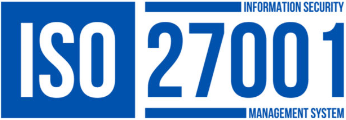iMEDIA CONNECTION published Five tips to banish appraisal dread >>
Formulaic, time-consuming and often rushed, is it any wonder two-thirds of organisations feel the current approach to appraisals is in need of review? The bureaucracy and tedium surrounding existing processes has driven high-profile management consultancies – such as Deloitte – to stop using traditional appraisals altogether.
It is beyond doubt that appraisals are a disheartening experience. A heavy emphasis on negative feedback means managers spend a significant amount of time criticising employees, leaving staff feeling under-valued and demotivated. Many managers dread the process as much as their employees, as they fear employees will have a negative reaction to particular feedback. Yet appraisals have the potential to be a powerful HR tool, helping organisations maximise performance, engagement, and retention.
So, what is the true value of annual reviews and how can organisations banish appraisal dread for both managers and employees?
1. Abandon the outdated ‘sandwich approach’
The sandwich approach has been acknowledged as the go-to appraisal format for human resources and training professionals. Intended to soften the impact of negative feedback by placing it between a positive opening and closing statement, all the method actually does is shift employee attention to the wrong performance areas. Strong performers will often focus on the negative aspects of the message and leave their appraisal demotivated about the areas where they need to improve. Poor performers, however, will choose to acknowledge only the positive feedback and leave their appraisal with an inaccurate view of their current level of achievement.
2. Emphasise strengths to boost development
The typical appraisal looks at past activity to gauge levels of current performance and views weaknesses as the major focus for development. Unsurprisingly, this technique has a tendency to undermine efforts to enhance performance and damage self-confidence. To facilitate progression, appraisals must emphasise the factors that energise and inspire individuals — their strengths and successes.
For employees who meet or exceed acceptable performance standards, strengths-based assessments can generate impressive results. According to a 2005 Corporate Leadership Council study involving 135 organisations, using a personality and strengths-based development process boosted performance by nearly 40%*.
To implement this approach, organisational culture must be realigned with strengths-based thinking and processes to encourage openness, collaboration, and positivity. Managers need to become performance enablers, rather than critical judges, and employees must be empowered to shape their future by highlighting what they want to achieve.
3. Take a realistic stance on weaknesses
A focus on strengths does not mean poor performance should be overlooked. In fact, a strengths-based approach to appraisals can help overcome weaker areas more effectively, as managers and staff consider ways to deal with overdone strengths – strengths used in the wrong way or at the wrong time – which undermine performance. For example, attention to detail can become perfectionism and self-confidence can become arrogance. These overdone strengths are frequently the most important source of performance shortfalls and correcting them can result in big performance gains. Considering ways to use strengths to overcome weaker areas and other performance blockers can also reduce defensiveness, and promote creative techniques to deal with stubborn weaknesses. For example, it may be useful for team members to collaborate with others in their department who have the strengths they lack.
Appraisals for individuals who fall short of acceptable standards must highlight areas where development is required and agree actions for improvement. Mistakes should also be treated as a learning opportunity rather than a punishable offence, thereby fostering an environment of transparency, where employees are motivated to overcome challenges.
It is, however, important to acknowledge that vulnerabilities are often integral to an individual’s personality and unlikely to change. Though neuroscience research has demonstrated that behaviours can be altered, attempting to embed a new skill when an individual does not have the base potential or inclination will not be successful.
Organisations should match individuals with roles that suit their natural strengths by pairing individuals with others who possess complementary skills or by using performance software solutions that reduce the impact of weaknesses.
4. Embrace the rule of three for priorities
With too many tasks to focus their attention on, employees can rapidly reach burnout and fall into the deficit trap. Yet this scenario can easily be avoided by managing priorities efficiently — setting no more than three goals for each individual to complete over a three-month period in what is known as the “3 x 3” approach.
Flexibility is paramount and organisations should be careful to ensure timelines are realistic or can be extended for long-term or complex goals. This applies in particular to ‘stretch goals’ that aim to take individuals out of their comfort zone, or area of psychological safety, to achieve a challenging priority that will broaden their skills.
5. Break the direct link between appraisals and pay
One of the chief causes of employee disengagement and low morale is the connection between annual appraisals and pay grades. This is a significant problem in organisations where performance ratings are regulated using a ‘forced distribution’ method that limits the number of employees in each category. Though there is no simple fix for the issue, organisations can explore alternative, more motivating approaches such as: linking pay increases to objectively verifiable results, holding separate pay reviews, abandoning the assignment of overall ratings for the performance cycle, and implementing regular calibration meetings to ensure ratings are being applied fairly.
To banish the dread of appraisals, ineffective procedures must be be laid to rest. Organisations need to focus on new, positive processes that help their employees uncover and harness their strengths. This requires a full-scale revolution that propels performance development into the modern age. By embracing efficiency, strengths and realistic goals, as well as accommodating weaknesses, appraisals can be welcomed, not feared.







